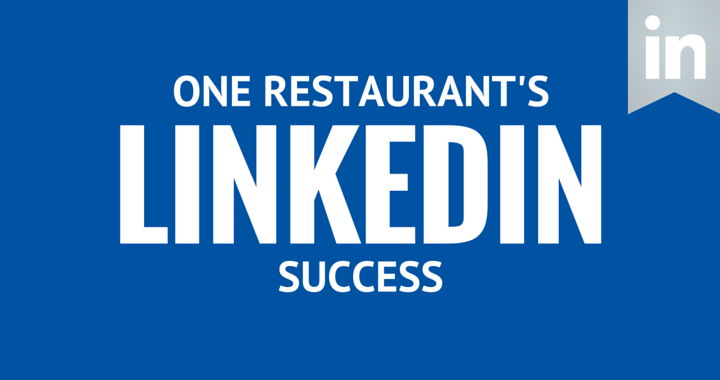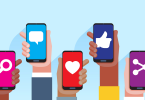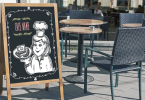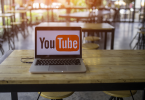
You may not think LinkedIn makes sense for marketing your restaurant.
If you've got an engaged following on Twitter, Instagram or Facebook already, in fact, you may think, "Why fiddle with a business network like LinkedIn that's built for entirely different purposes?"
You'd be wrong.
I want you to check out the interaction (and massive, free brand visibility) a simple request from a hotel leader received on LinkedIn. It started with something simple. Many of you have possibly done something like this before with in-store surveys or via email, but not on LinkedIn:
Name Our Burger

Check that out: This one simple post received over 2,500 "likes" on LinkedIn and over 8,000 comments. EIGHT THOUSAND COMMENTS.
Yes, some are legit comments and naming ideas. Some are goofy.
I took this screenshot over 3 months ago, so you can bet the engagement has gone up since then, even though LinkedIn is more like Twitter than Facebook. What I mean by that is your personal LinkedIn posts and updates on LinkedIn and Twitter have a much shorter shelf-life.
Now, it's one thing to get people to toss a name in a fishbowl to be entered to win a contest like this. It's another thing to go the digital route and enjoy multi-thousand contributions and multi-fold more impressions.
For free.
And when you consider that LinkedIn offers super SEO benefits in addition to the connections you can make, it's worth a look.
Getting Yourself on LinkedIn
LinkedIn is unique as a social network, though some argue it's not a social network at all.
There are over 400 million LinkedIn users as of February 2016, 107 million of which are in the United States. Most users derive value on LinkedIn by finding others to network with, companies to research, finding new employment, seeking potential customers, or looking up potential business partners and collaborators.
The average LinkedIn user spends at least 3 hours on the site each week.
It's the only social media network focused on business connections and business conversations. Like Facebook, you establish a personal identity on LinkedIn, with your professional bio, contact info, and a chronological list of your career stops (similar to a CV or resume).
In fact, you really MUST establish at least these areas on your personal LinkedIn profile:
- Your full name
- A professional "title" (note: this should be DIFFERENT from your current job title, people get this wrong all the time)
- Each career move and brief summaries of accomplishments in each role
- A custom and clean URL (https://www.linkedin.com/in/brandonhull, for example, vs. https://www.linkedin.com/in/brandon-hull-672087116
- Volunteer work and organizations you're involved with
- Honors or awards you've earned
- Testimonials (these are called Recommendations on LinkedIn)
- Skills & endorsements (profiles with skills receive 13 times more views than those without!)
Once you've created a profile and begun connecting with professionals you already know, you can post updates for all of your connections to see, read, like, comment on, and share with their followers, just like other social networks.
Now, a word of warning: LinkedIn isn't a place to post random thoughts of the day, silly cat videos, or other nonsense. You'll get "unfollowed" quickly with this.
But it's a great platform for connecting with people for all the right, professional reasons, and share valuable content.
Getting Your Restaurant on LinkedIn
Now, if you're the founder or owner of your restaurant, you can create a separate profile for that business, just like on Facebook. And your company profile can earn its own followers, which are separate group of people from your personal connections, though obviously those folks are the ones you'll invite first to follow your restaurant/company on LinkedIn.
Remember, when you post updates with your own personal profile, all of your connections can see those posts, and they can turn up in Google searches as well. That's what happened with Julian's post in this example.
When you post updates with your company profile, all of your followers can see and interact with those posts just the same.
In this case study/example, Stones Corner Hotel is part of ALH Group. Here's a snapshot of their company profile on LinkedIn (click to enlarge):
They've got over 6,600 people following them on LinkedIn -- following ALH Group. That means every time their hotel group posts an update on LinkedIn, a significant number of those people will see that update.
I've learned first-hand that restaurateurs make bad assumptions about LinkedIn. But the assumptions are based on a transactional view of their business. LinkedIn won't generate a walk-in or online order right now so it's not quite as worthy of my attention, is the reasoning.
But what about the personal network you can establish on LinkedIn to stay top of mind? What about the brand-building you can get done for free as you build and update your company profile?
What about the loyal following you can generate?
While I don't expect, and honestly, I don't personally want, restaurant leaders to begin using their LinkedIn profiles to post today's lunch special (my LinkedIn stream would get overrun!), I do think there's tremendous value from LinkedIn for restaurants to generate visibility, buzz, fan engagement, and yes, even potential business on LinkedIn.
Click here to learn more on how to create your restaurant's profile on LinkedIn.







